
Advanced Blemish Removal
What is advanced Blemish Removal Treatment ?
This is an increasingly popular, safe, effective and hygienic treatment for the removal of unsightly common skin blemishes giving an immediate and effective result on conditions such as dilated capillaries, thread veins, red veins, spider naevus, blood spots, skin tags ,milia and warts, xanthelasma etc . A consultation will be given prior to treatment to ensure that client is suitable for treatment and verbal and written aftercare advice following treatment . Photographs will be taken before and after treatment as a condition of treatment.
Click here to view our gallery of Advanced Blemish Removal both before and after treatments.
Treatment are carried out by Angela a highly skilled and experienced skin specialist who is able to treat these conditions as she holds a level 4 Advanced Electrolysis certificate along with Level 5 Advanced Blemish Removal qualification and is registered with the local council and the British Institute & Association of Electrolysis no one should be treating these skin blemishes without the above qualification’s.
The length and number of treatments will vary depending on skin response and skin condition. Following treatment clients will need to;
- Avoid sunbathing for 4 weeks
- Apply sun block for 4 weeks
- No swimming or heat treatments for 48 hours
- No exercise for 48 hours.
- Apply recommended skin care product daily for 4 weeks (cost £3.50)
- Return for either a follow up treatment or to review results and healing of skin depending on condition treated.
- Aftercare advice will be given both verbally and in a written format and must be adhered to for successful skin healing to result. It is imperative that Clients follow this advice to achieve a positive result.
* Treatment is not suitable for anyone who is on blood thinning medication or has a blood disorder.
Frequently asked questions
Is the treatment painful?
Pain thresholds vary from person to person and area to area, however there is some discomfort.
How will the skin look after red vein therapy treatment?
There will be some redness, swelling, itchy feeling and pin-dot crusts may appear lasting from a few days to 2 weeks approximately depending on individuals healing ability, medication, type of lesion treated and Age.
How much does treatment cost?
Price varies from £65 to £120 depending on type of blemish treated and time taken to treat.
E.g. 15 minutes or 30 minutes . Some blemishes can be treated in one session others may require two , you will be advised of this at your consultation
.Skin disorders and blemishes that can be treated include:
1. Spider Naevus/Telangectasia , Cherry Angioma
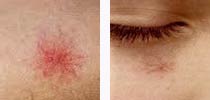 A spider nevus is a collection of blood vessels with a centrally dilated vessel with smaller blood vessels radiating out from it. Located on the face usually but may be found on the body.
A spider nevus is a collection of blood vessels with a centrally dilated vessel with smaller blood vessels radiating out from it. Located on the face usually but may be found on the body.
Causes may include: injury, extremes of temperature, pressure and pregnancy.
Follow up treatments £65 depending on time slot. This conditions usually require one or two treatment sessions on average.
2. Telangiectasia or Broken Capillaries or Red Vein Therapy
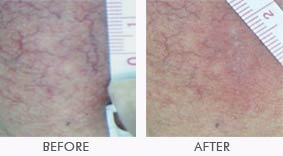 Broken or dilated blood capillaries generally found on the face and nose. Appear as little blood lines which become larger and darker over time. Treatment can also be given for telangiectasia found on legs.
Broken or dilated blood capillaries generally found on the face and nose. Appear as little blood lines which become larger and darker over time. Treatment can also be given for telangiectasia found on legs.
Causes: This condition can occur at any time of life, due to either exposure to heat, sunlight, hormonal changes, physical trauma and medication or may be related to life-style. It creates a cosmetic problem as the capillaries dilate very close to the skin surface.
This treatment uses either diathermy to produce thermo-coagulation or the blend a combination of diathermy and galvanic which can successfully reduces the appearance of unsightly telangiectasia; otherwise called broken capillaries, red thread veins. Depending on the extent of of the problem more than one treatment session may be required, e.g. legs.
*This treatment is not suitable for anyone who is on blood thinning medication or has a blood disorder.
3. Cherry Angioma , Campbell De Morgan or Blood Spots
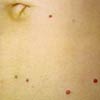 Also called Cherry Angioma are a vascular blemish, resembling small blood spots which can appeara anywhere on the body.
Also called Cherry Angioma are a vascular blemish, resembling small blood spots which can appeara anywhere on the body.
Campbell De Morgans are vascular blemishes which are dome shaped or raised, which are generally located on the midriff, back and front of individuals after 30 years of age.
*This treatment is not suitable for anyone who is on blood thinning medication or has a blood disorder.
4. Age/liver spots
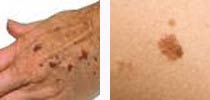 Age spots occur in people over the age of 50 found on the face and hands predominantly, but can also occur on any area exposed to sunlight e.g. arms, legs etc.
Age spots occur in people over the age of 50 found on the face and hands predominantly, but can also occur on any area exposed to sunlight e.g. arms, legs etc.
They are a harmless collection of flat pigmented cells which accumulate in the superficial layers of the epidermis. They can only be treated at the early stage of growth before they penetrate the dermis tissue.
*This treatment is not suitable for anyone who is on blood thinning medication or has a blood disorder.
Benign Cutaneous Tumours
5. Seborrhoeic warts or Seborrhoeic keratosis
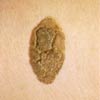 Appear as a flat-topped or warty-looking lesion that appears to be ‘stuck on’ to the skin. They are usually pigmented; colour varies from pale, brown to black in colour. The surface is usually pitted and irregular with visible keratin dots giving a granular and rough appearance.
Appear as a flat-topped or warty-looking lesion that appears to be ‘stuck on’ to the skin. They are usually pigmented; colour varies from pale, brown to black in colour. The surface is usually pitted and irregular with visible keratin dots giving a granular and rough appearance.
They vary in size from tiny to large up to two inches across. Common the face of older individuals but may arise anywhere on the body from the age of 40+. treated with diathermy treatment time varies according to size and age of condition.
6. Dermatosis Papulosa Nigra (specific to black skin)
This condition is similar to Seborrhoeic keratosis but specific to black skin and develops during puberty. The lesions are smooth; dome shaped pigmented brown to black found on the cheek, neck and upper chest areas.
Sebaceous Gland Disorders
7. Sebaceous cysts
 Sebaceous cysts appear as a painless, firm, round flesh coloured nodule composed of trapped sebum and pus usually. Locations include face, chest, scalp, back and underarm.
Sebaceous cysts appear as a painless, firm, round flesh coloured nodule composed of trapped sebum and pus usually. Locations include face, chest, scalp, back and underarm.
Cysts are moveable under the skin and vary in size from a pea size to egg size. Once treated a thick foul cheese like material is expressed, treatment will reduce size of cyst but a second treatment is often required and successful treatment cannot always be guaranteed depending on size etc. Sebaceous cysts often require more than one treatment.
8. Milia
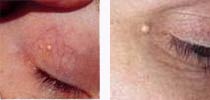 Appear as tiny pearly white raised lumps under the skin, they are composed of plugs of sebum trapped in a blind duct within the skin.
Appear as tiny pearly white raised lumps under the skin, they are composed of plugs of sebum trapped in a blind duct within the skin.
Common on dry skin types and found on the upper cheek and eye areas.
Treated fairly easily with diathermy.
9. Warts
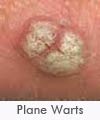
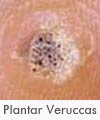
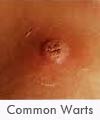 Cause viral, there are a variety of different types of warts and may be singular or multiple.
Cause viral, there are a variety of different types of warts and may be singular or multiple.
Common warts appear as raised rough epidermal tumour.
Plane warts appear are flat warts often in clusters on the face and body smooth pearly epidermal elevations either flesh coloured or brown often found around the midriff.
Plantar Verrucas appear on the soles of the feet and are thickened, tough skin with small black dots in the centre. May be multiple or singular can be painful to walk on. Can be treated using a fine probe inserted into verruca and heat energy discharged into the root of the verruca sealing off blood supply which prevents the verruca from surviving, this method is more successful than freezing Verrucas.
Warts often require more than one treatment for a successful outcome depending on how large the wart is and how long it has been present.
10. Skin tags/Fibro epithelial polyp/papilloma
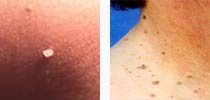 A common fibrous skin condition is an overgrowth of epidermal cells. Skin tags are soft and can be wriggled around, they vary in size, shape and colour often darkly pigmented; can be tiny specks, the size of a pea or even larger, can be singular or multiple, may occur during pregnancy.
A common fibrous skin condition is an overgrowth of epidermal cells. Skin tags are soft and can be wriggled around, they vary in size, shape and colour often darkly pigmented; can be tiny specks, the size of a pea or even larger, can be singular or multiple, may occur during pregnancy.
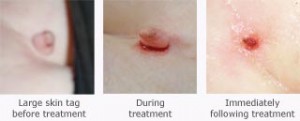 Found in areas of friction, around the neck line, under the arm or
Found in areas of friction, around the neck line, under the arm or
bra line, and can be easily treated with diathermy to give instant results by applying heat energy to the stalk of tag usually come off during do not normally require further treatment. Skin tags are viral in nature but not contagious to others.
11. Xanthelasma Palpebrarum
These are soft yellowish fatty deposits of cholesterol underneath the skin. Located around the eye area they are not harmful but very disfiguring. Below are photos of before and after one treatment taken in June 2022
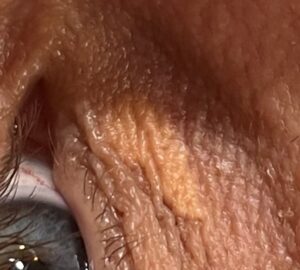



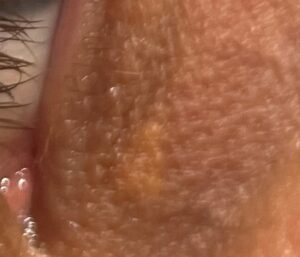
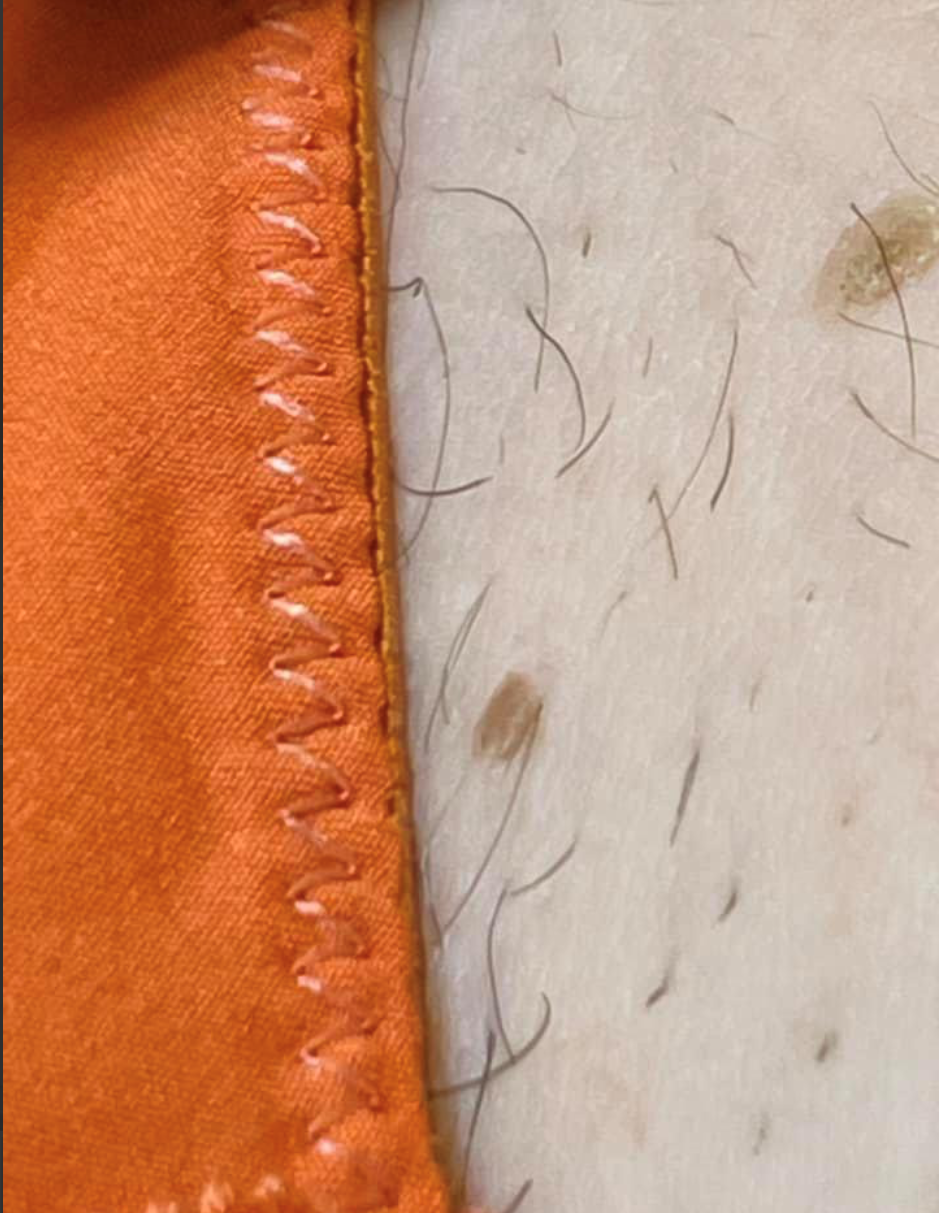
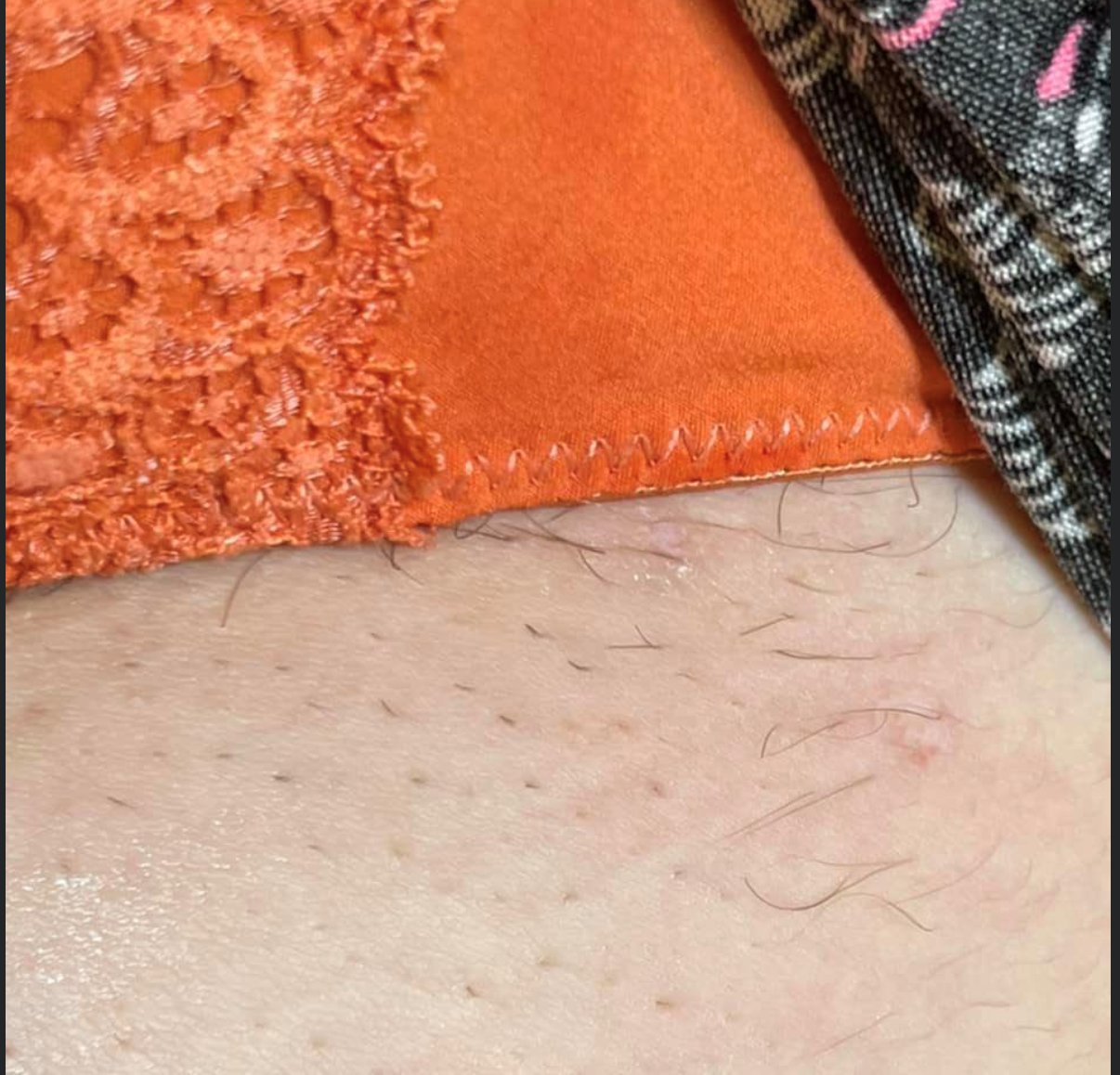
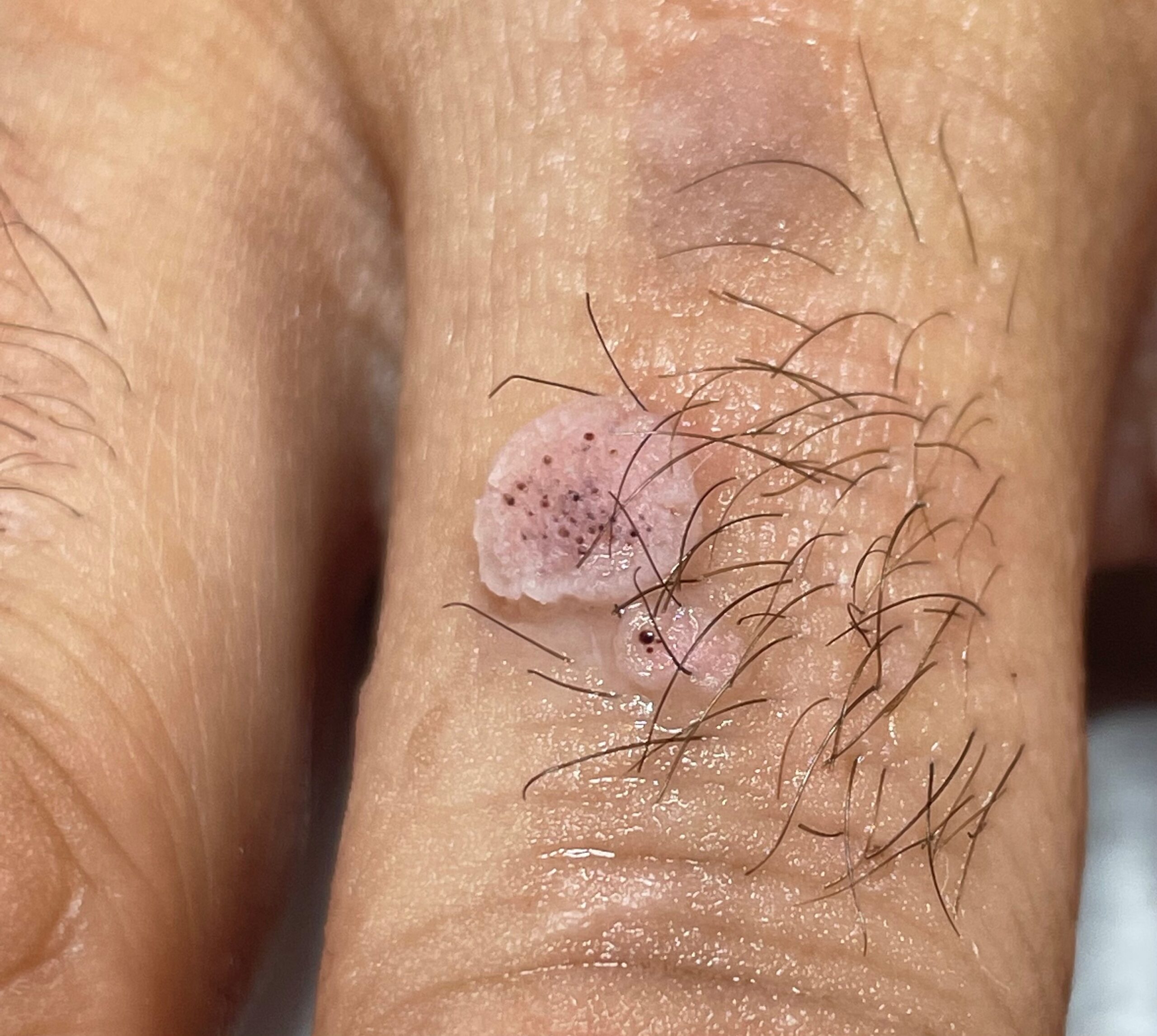
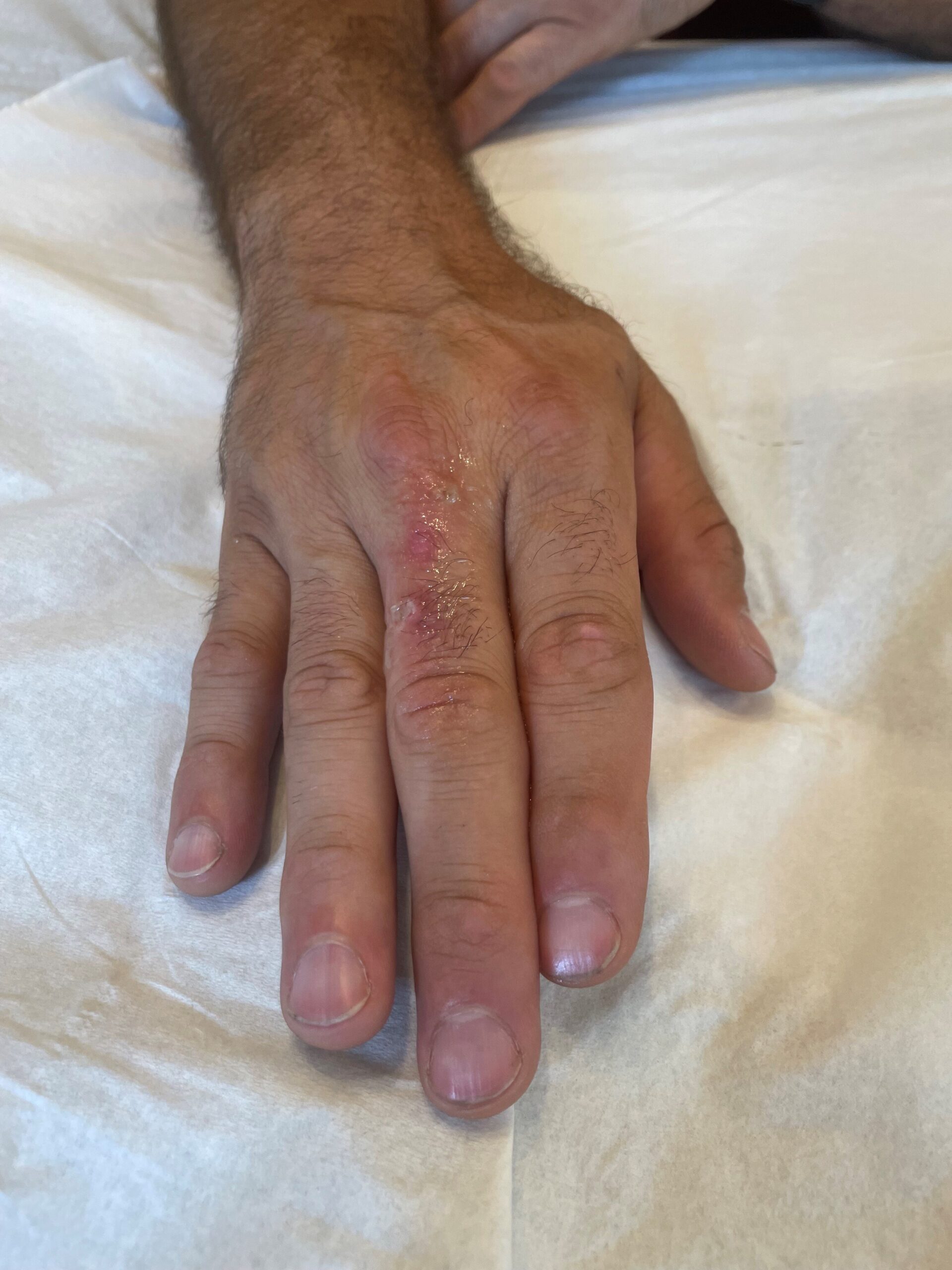
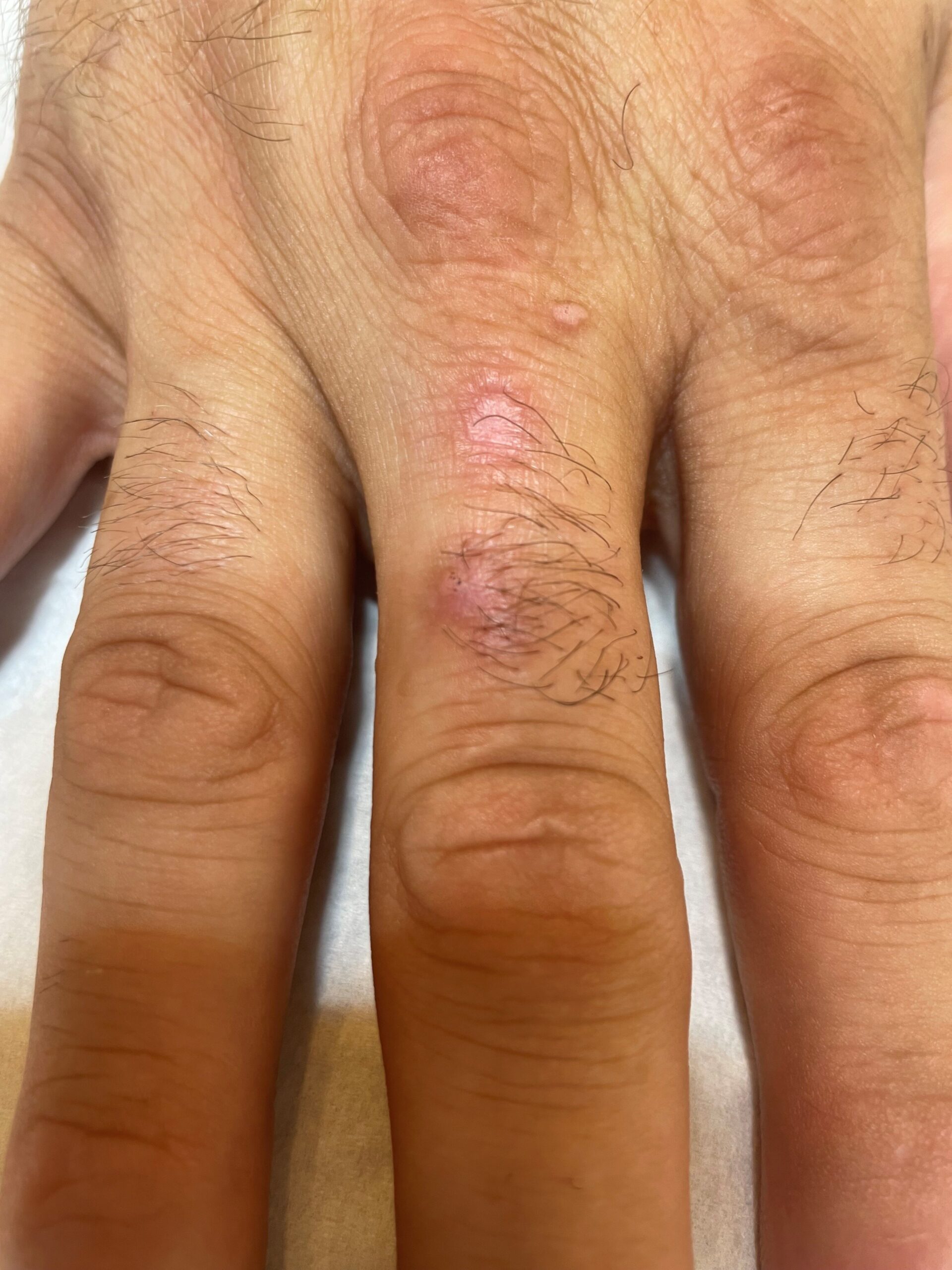



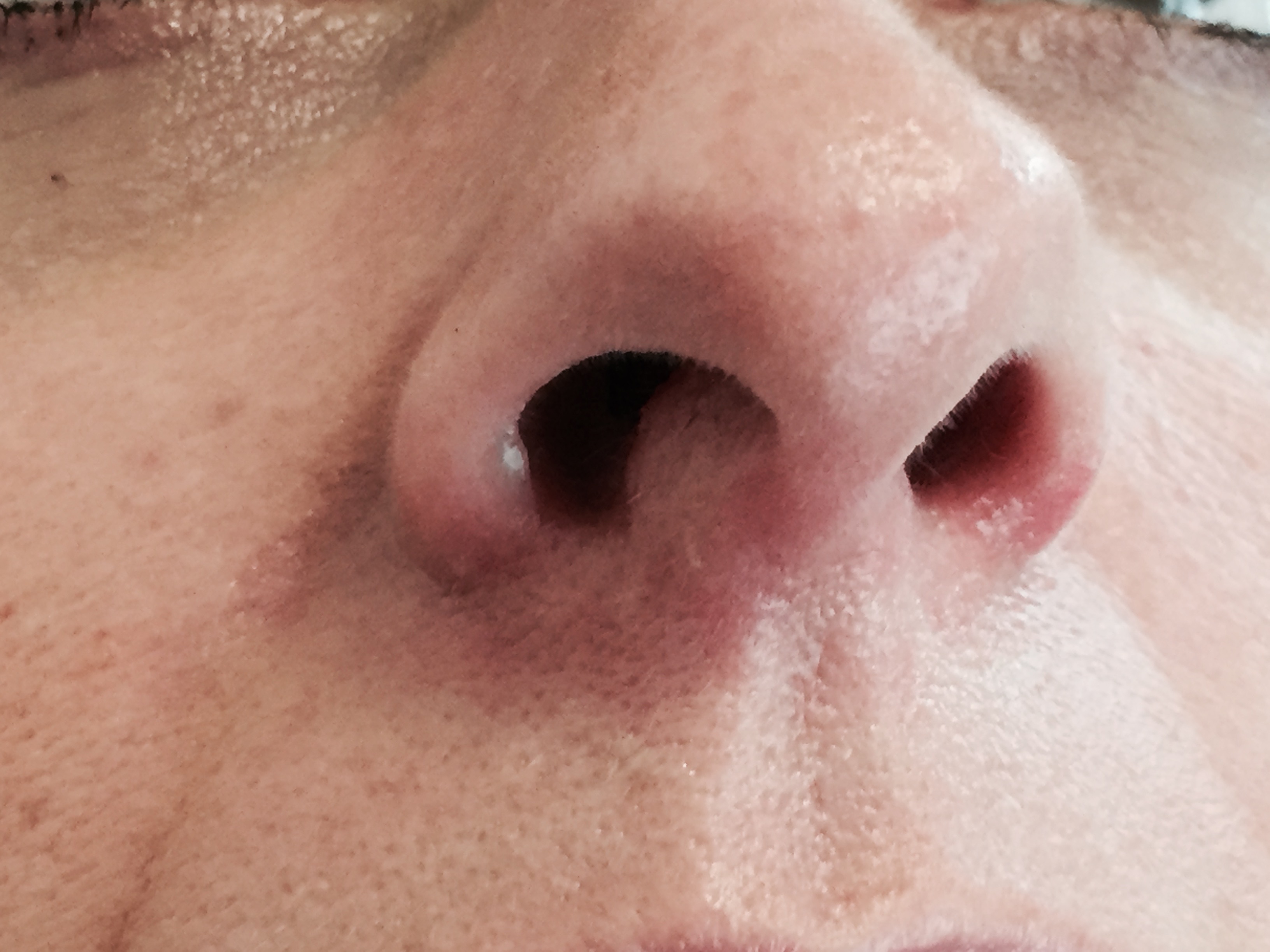
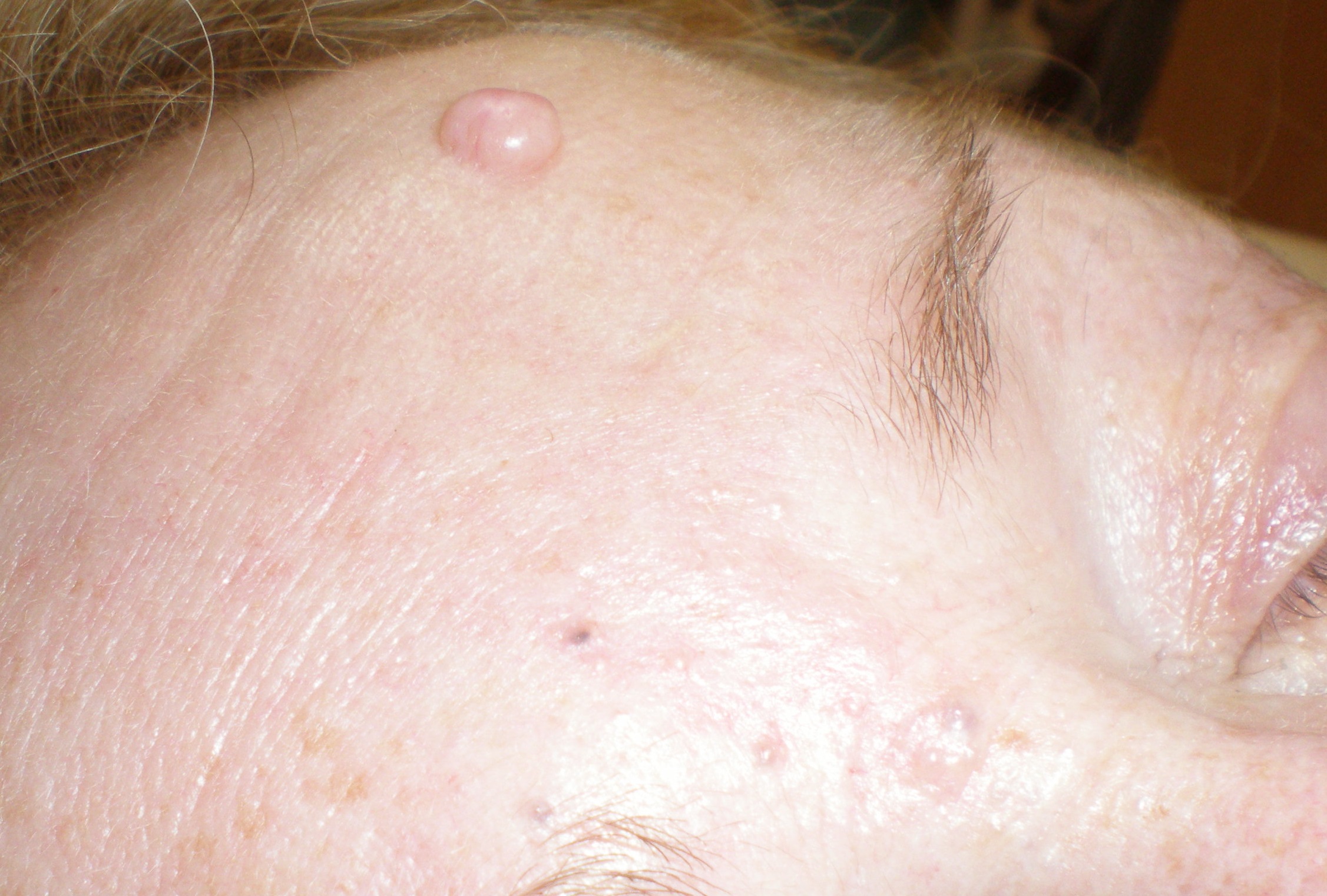
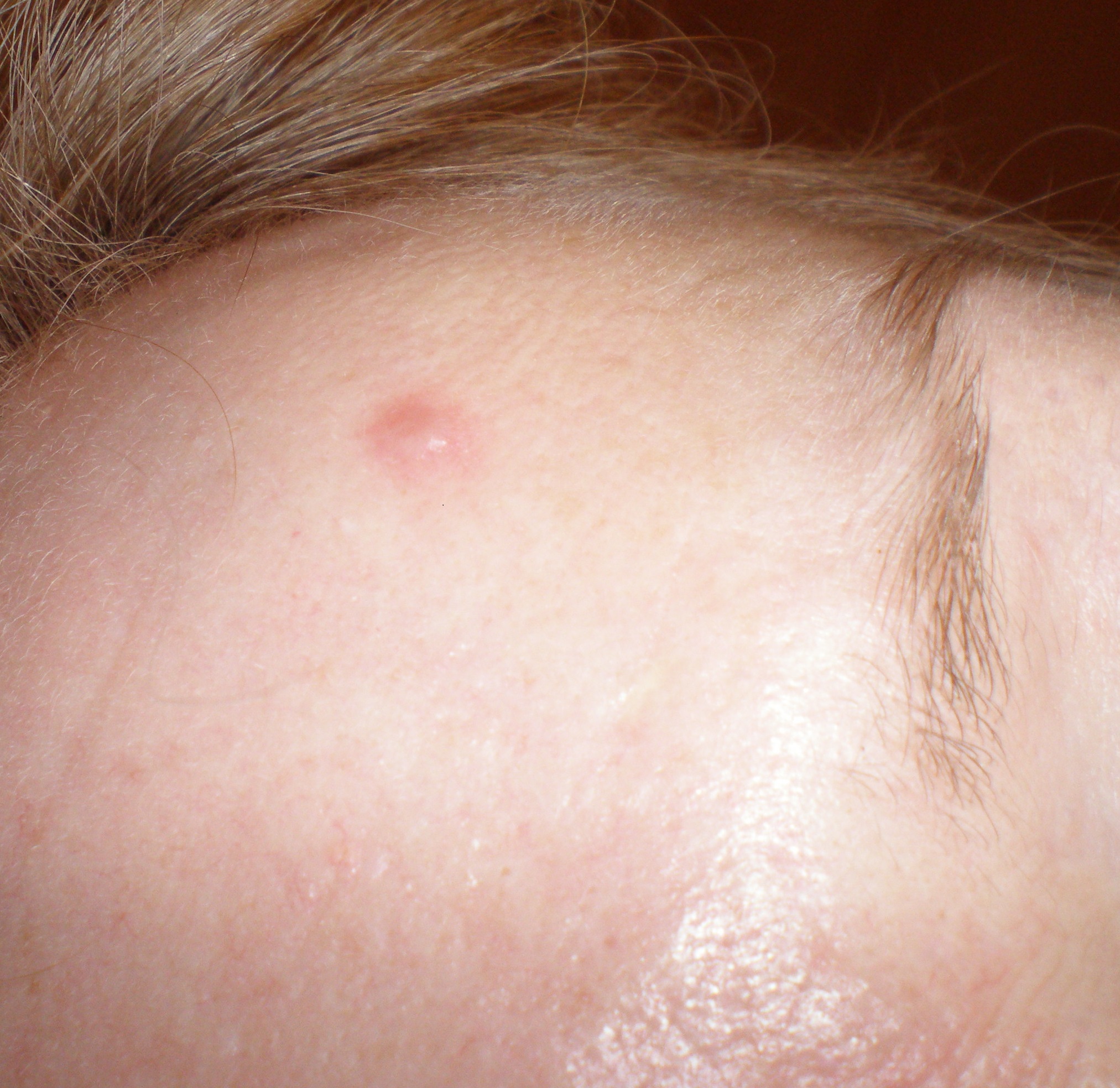
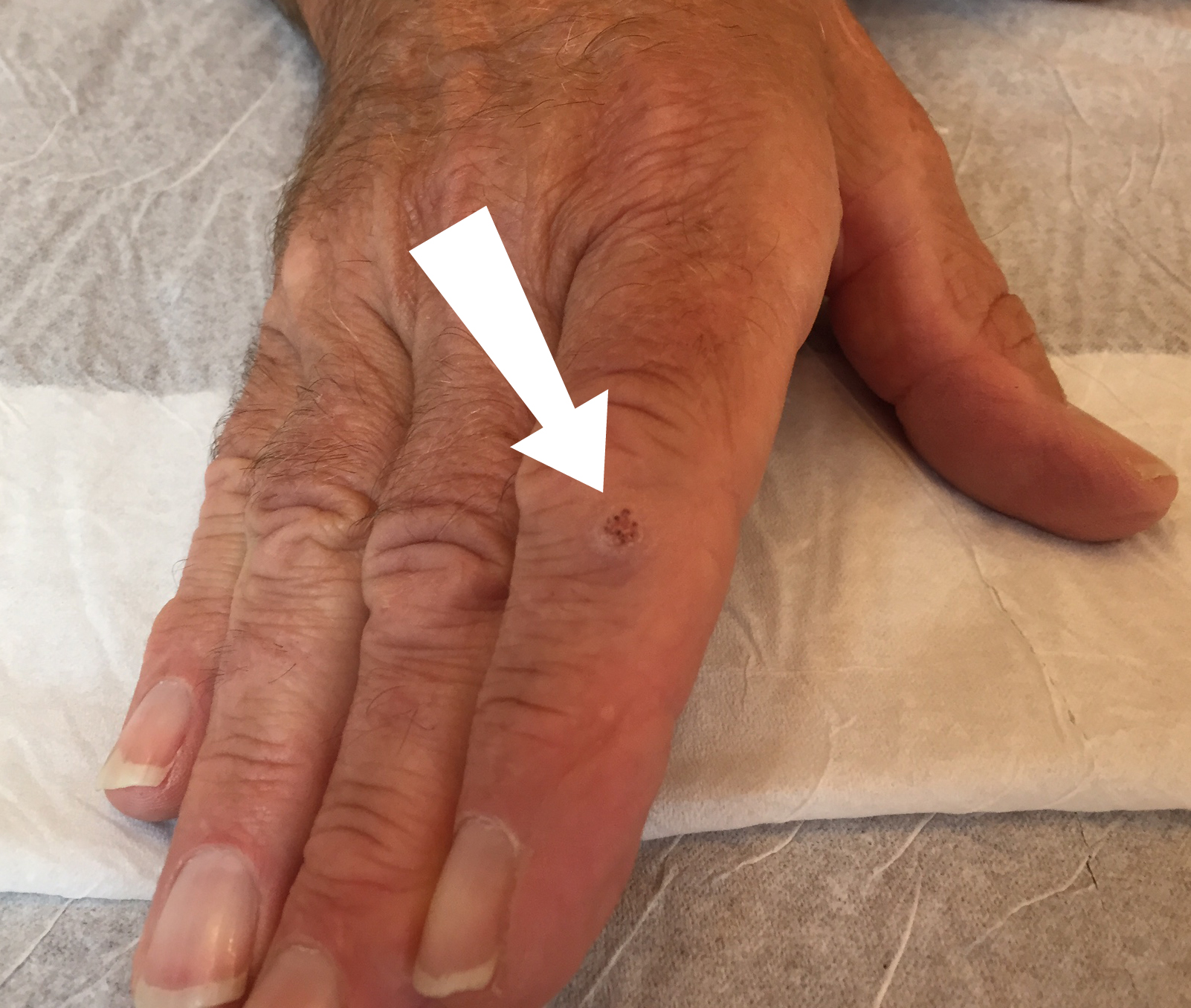
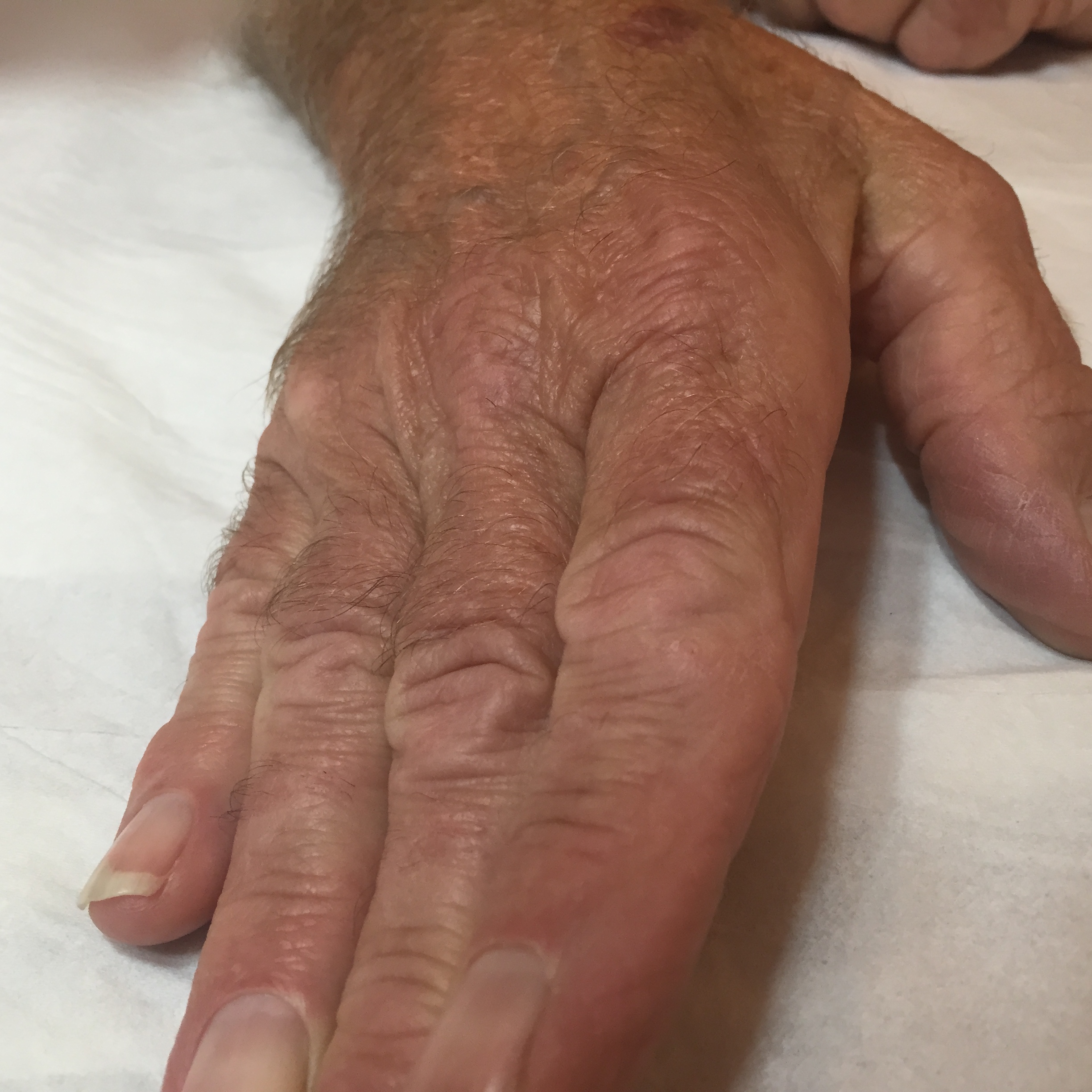
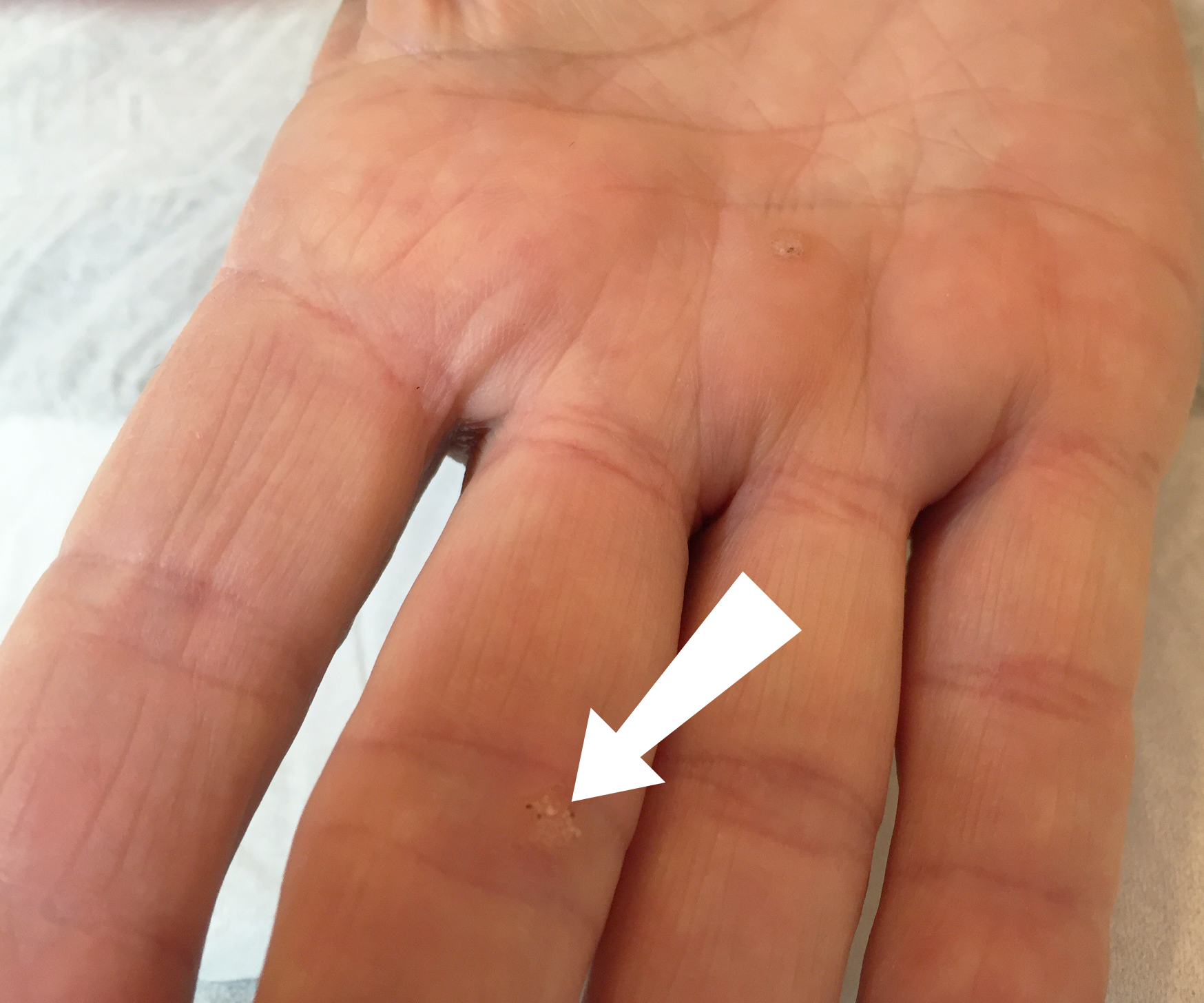
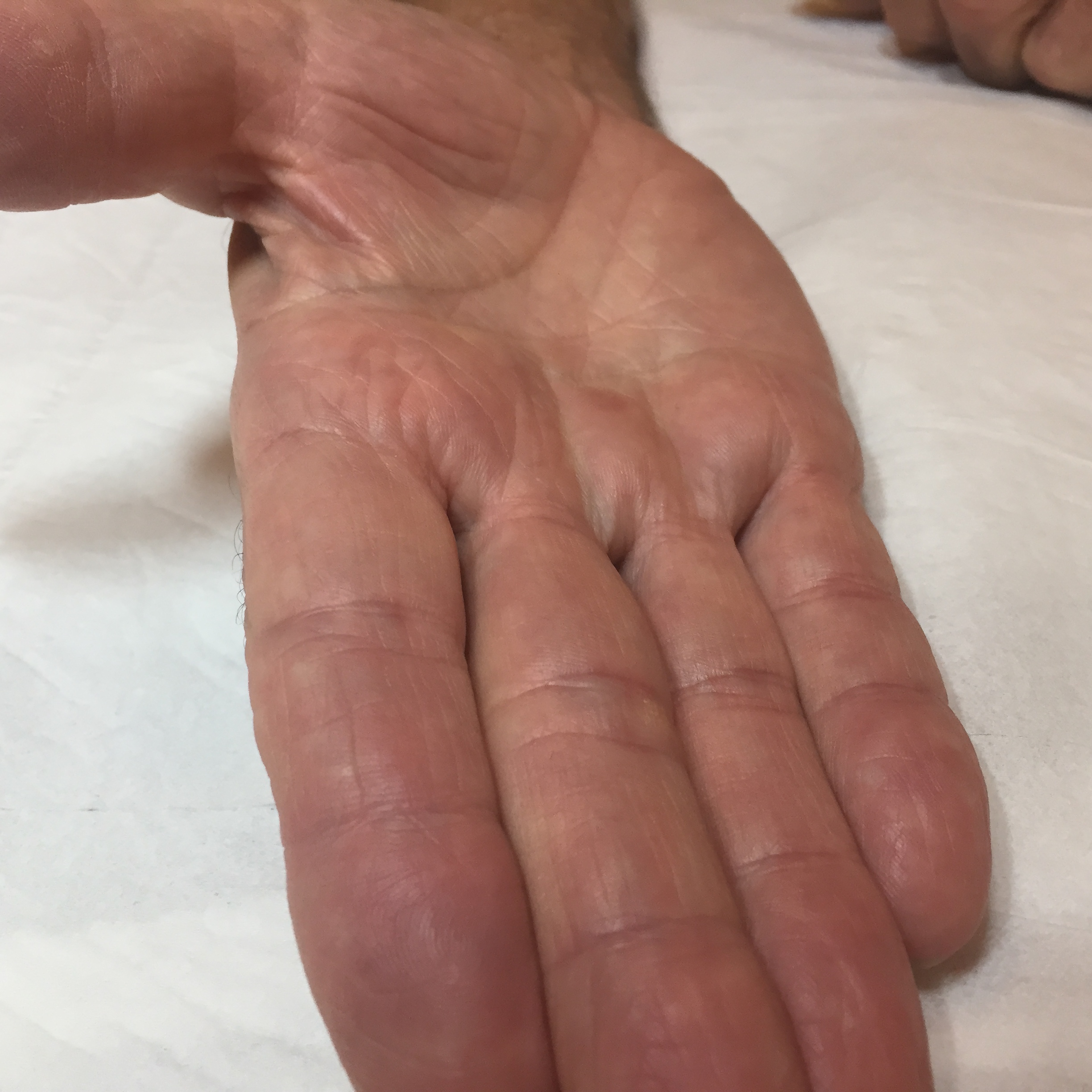
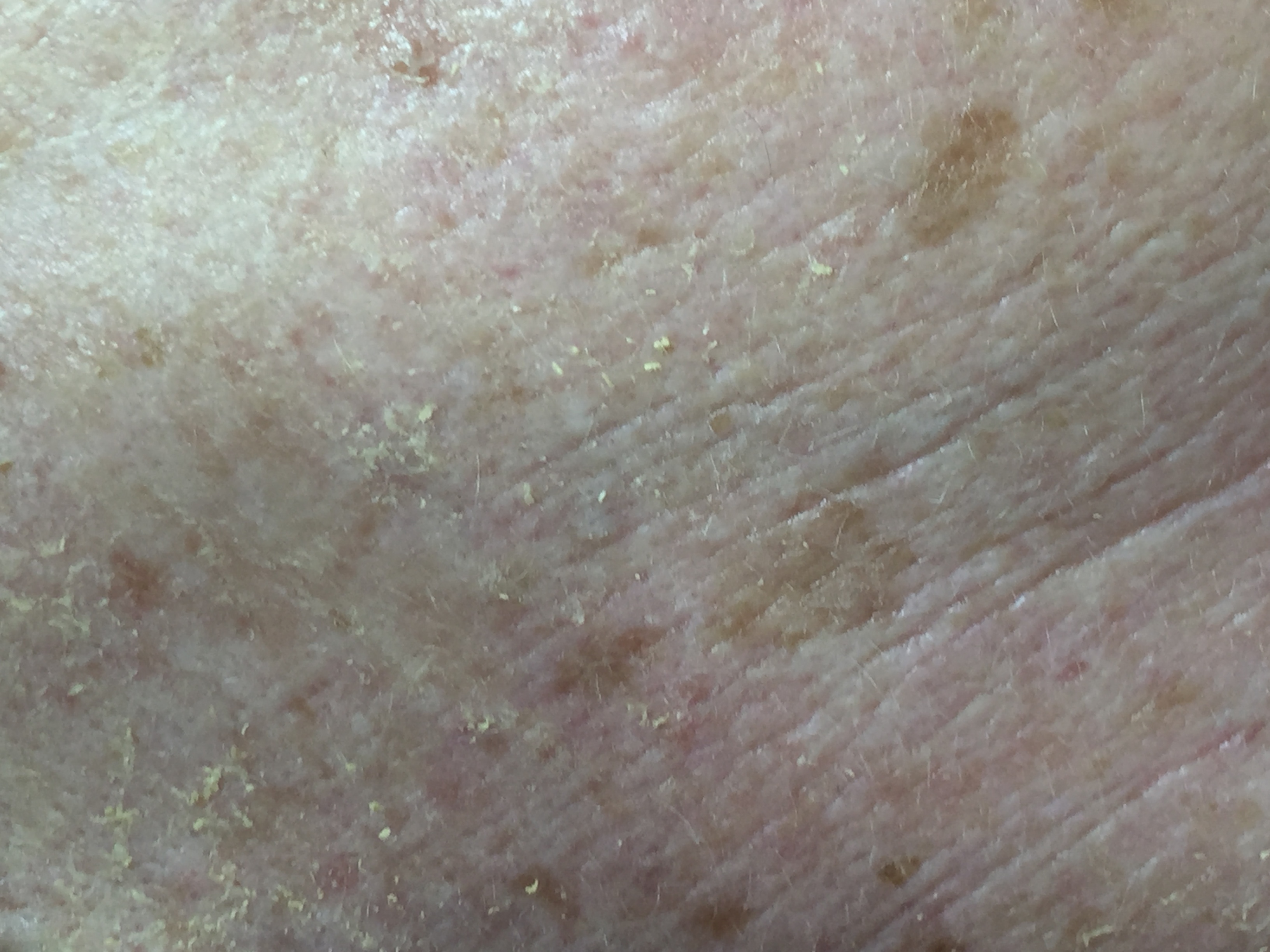

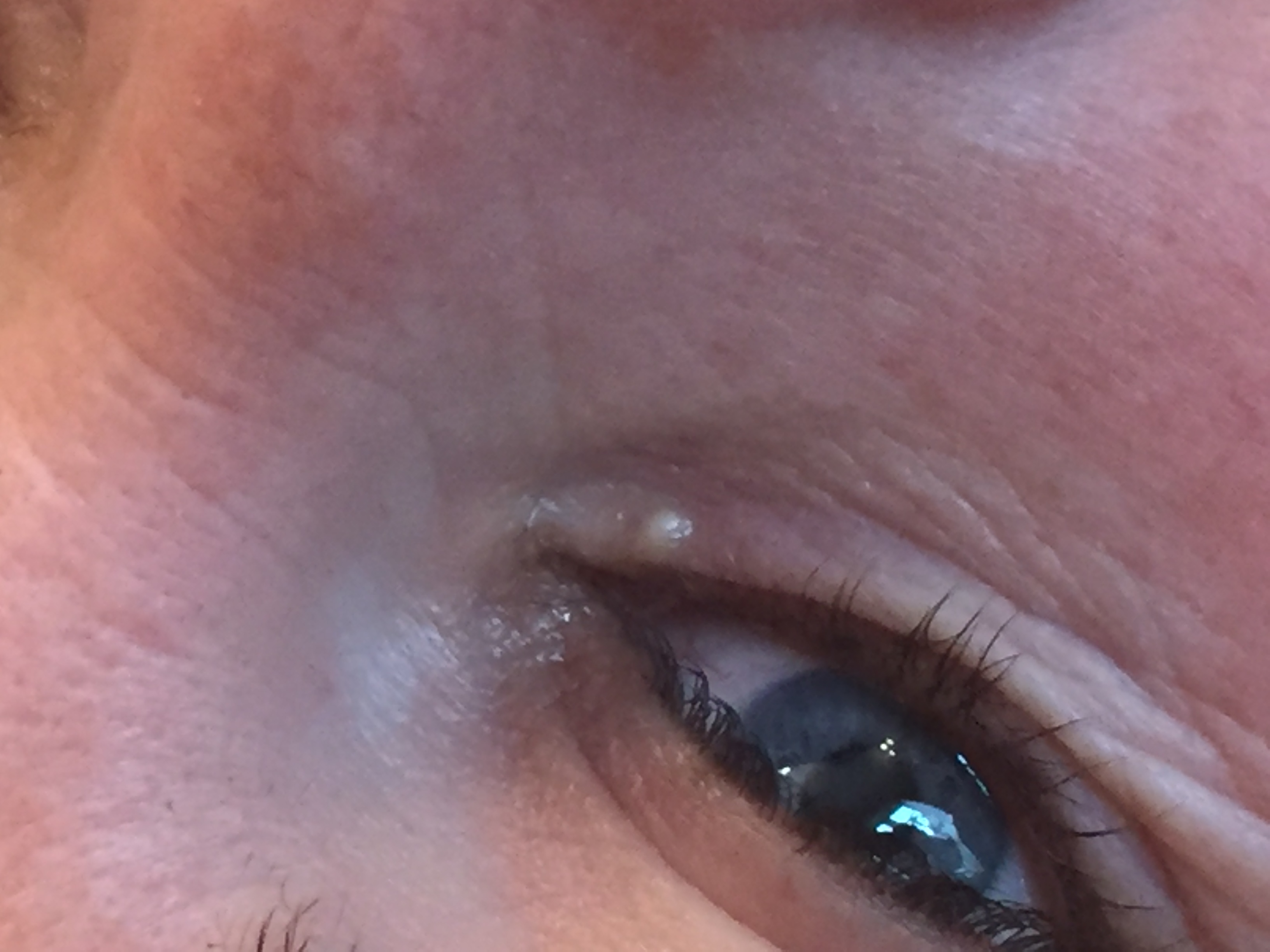



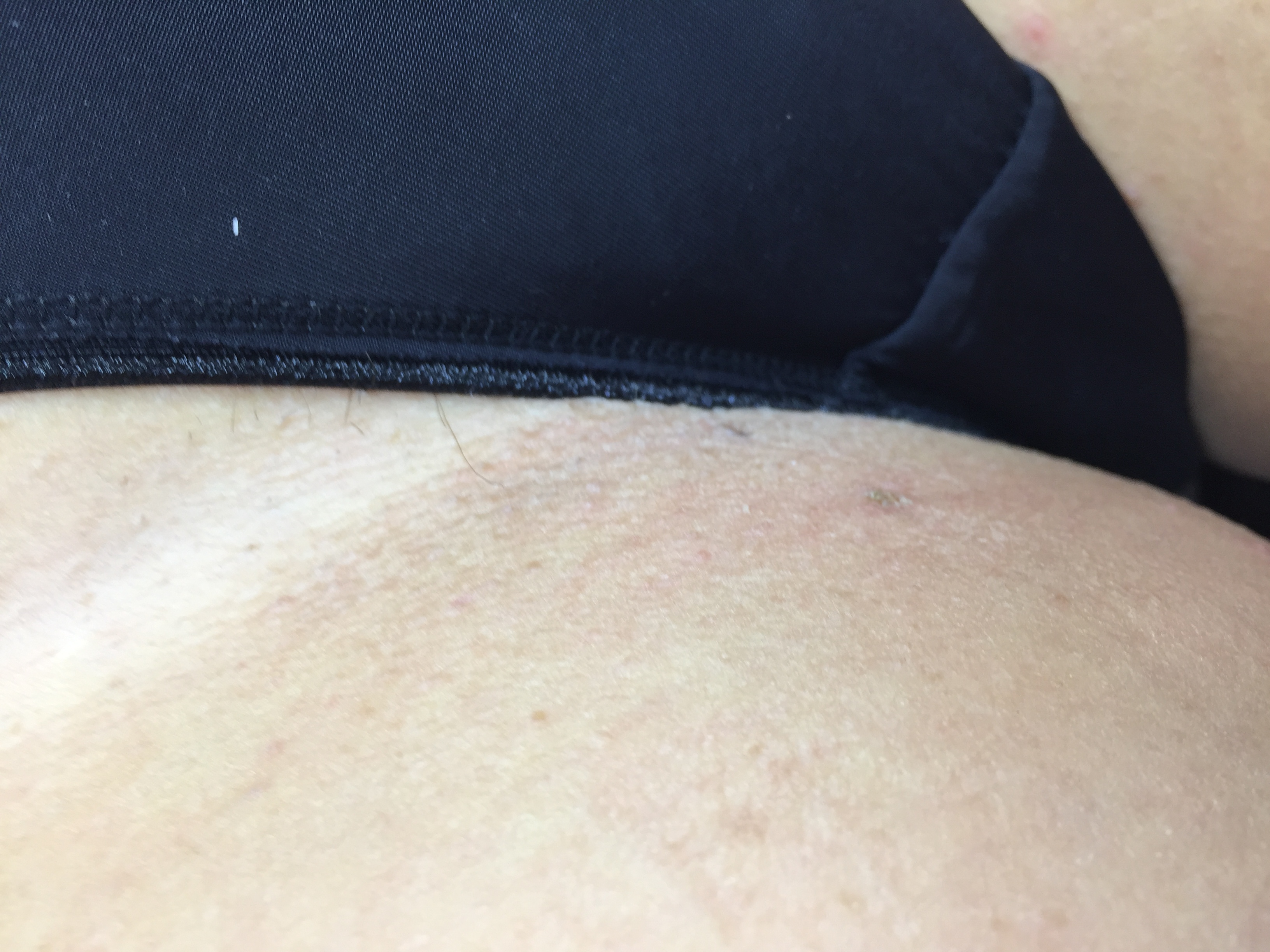
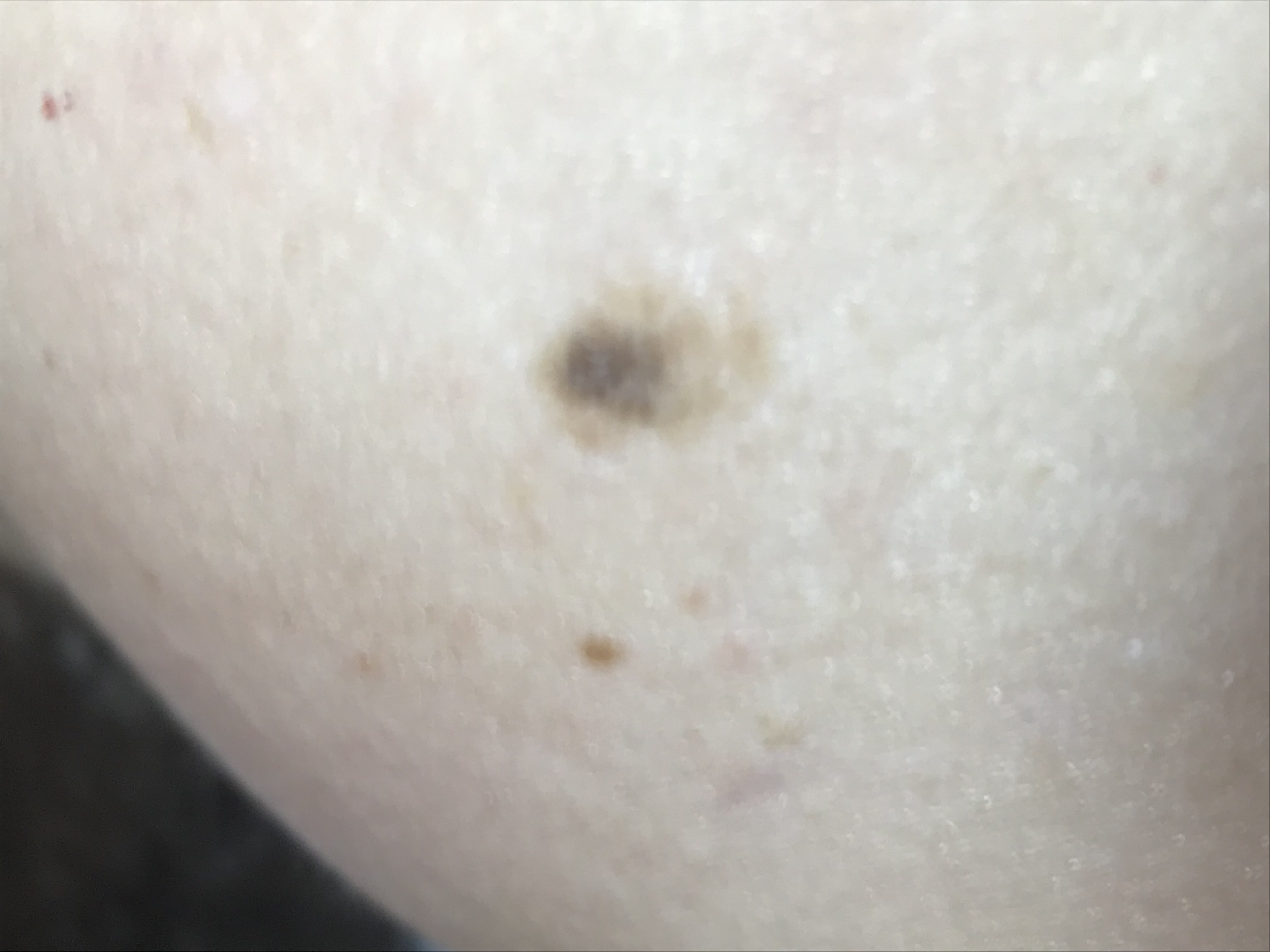

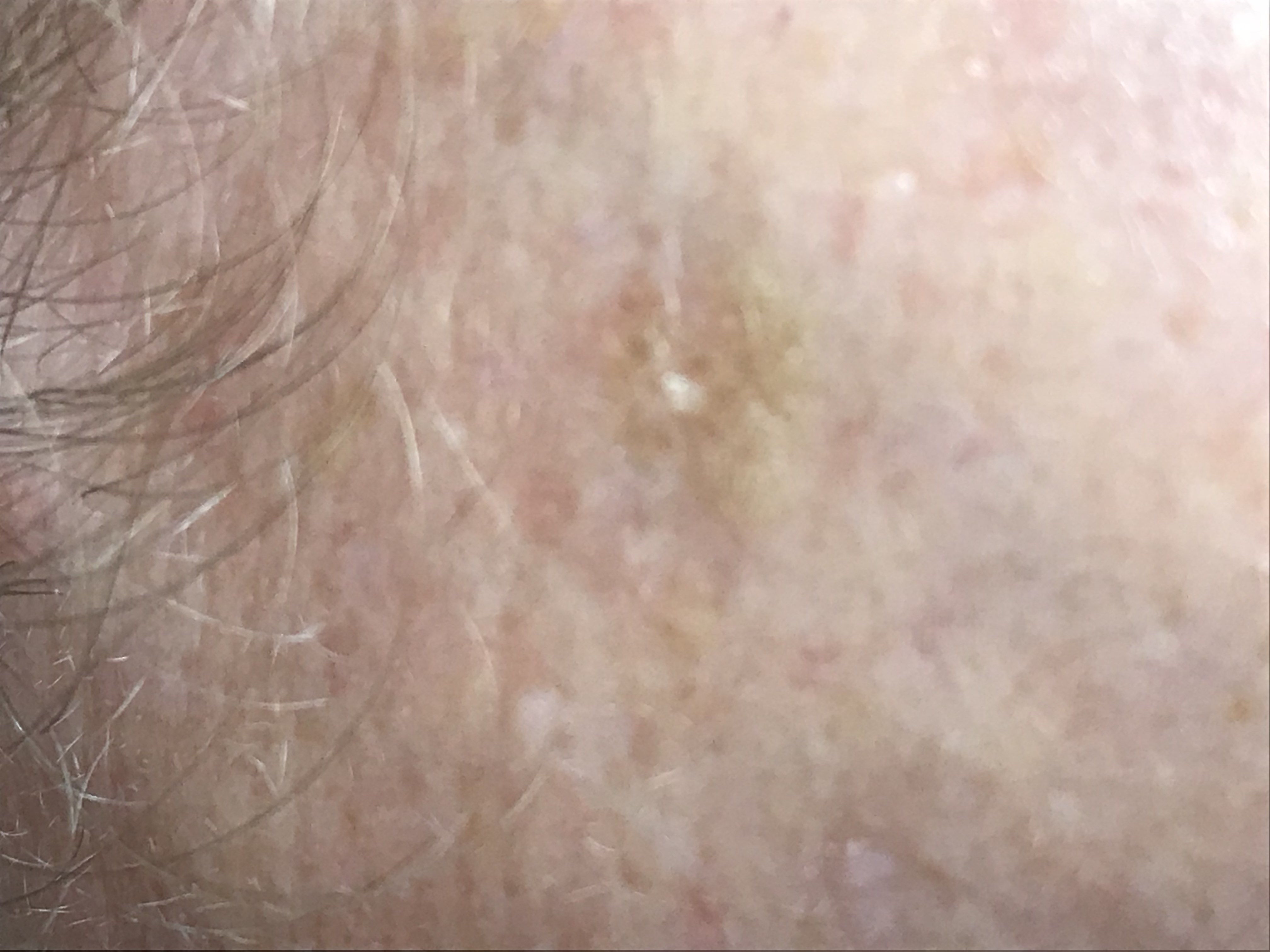
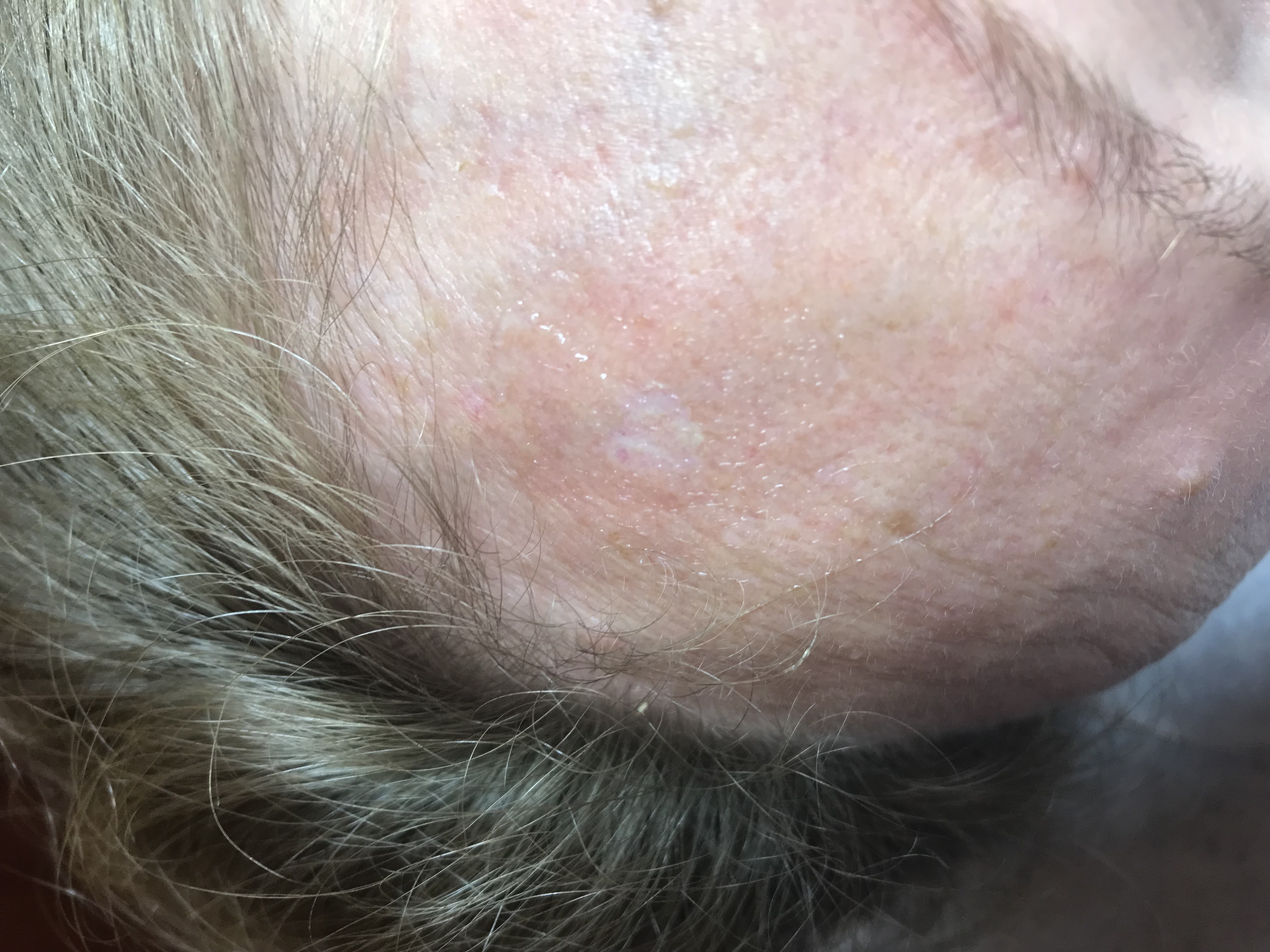

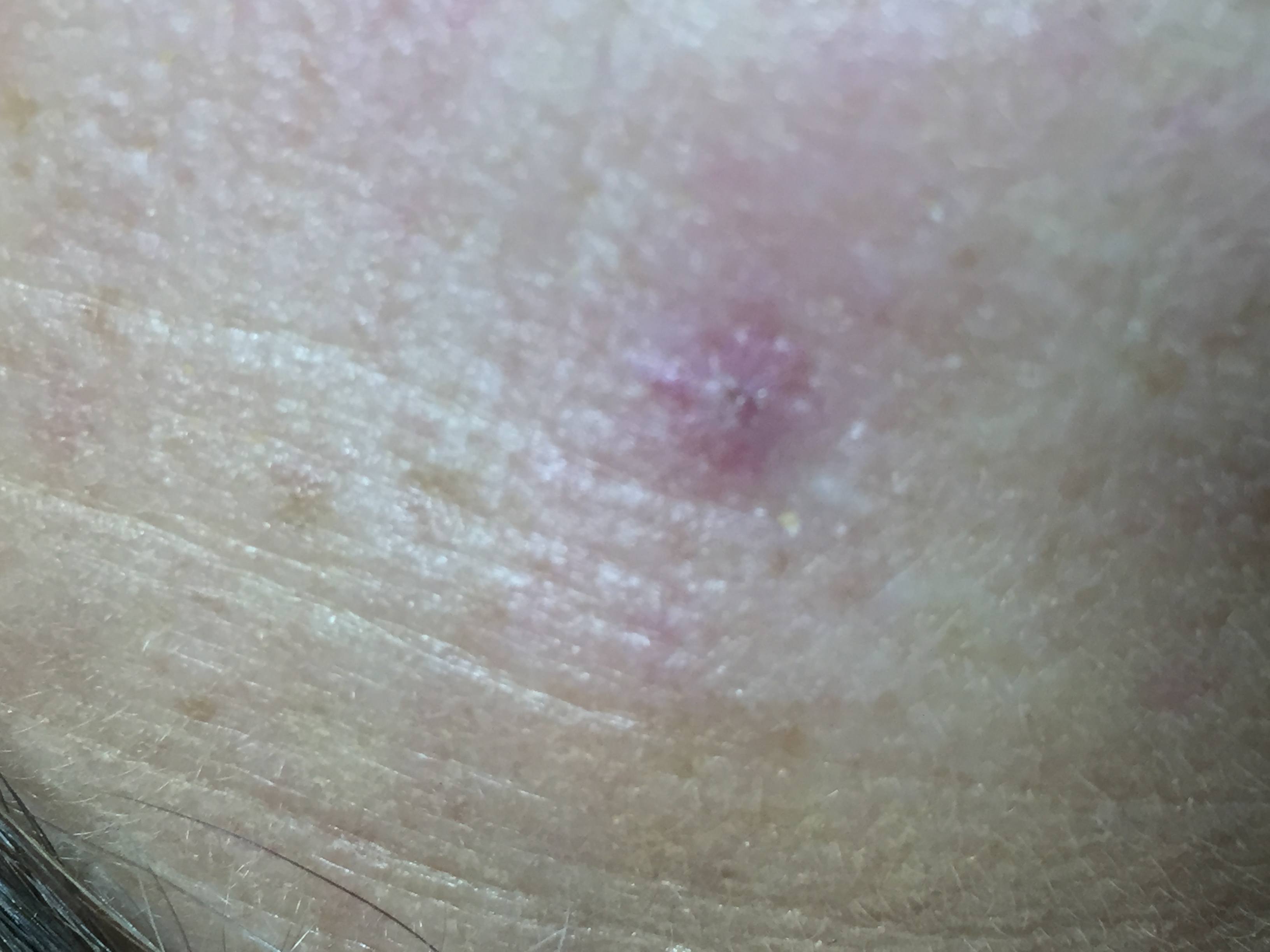








Share this...